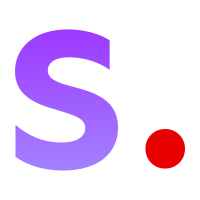Discover and explore top open-source AI tools and projects—updated daily.
Kandinsky-3 by  ai-forever
ai-forever
Text-to-image diffusion model for multifunctional generative tasks
Top 73.8% on SourcePulse
Kandinsky 3.1 is a text-to-image diffusion model designed for high-quality, realistic image generation with enhanced features. It targets researchers and power users seeking advanced control and efficiency in AI-driven visual content creation, offering improvements over its predecessor, Kandinsky 3.0.
How It Works
Kandinsky 3.1 builds upon a latent diffusion architecture, incorporating a Flan-UL2 text encoder and a large U-Net. A key innovation is Kandinsky Flash, a distilled model using Adversarial Diffusion Distillation on latents for significantly faster inference (4 steps) without quality degradation. It also features prompt beautification via an LLM (Intel's neural-chat-7b-v3-1) and integrates IP-Adapter and ControlNet for image-conditional generation.
Quick Start & Requirements
- Install via
pip install -r requirements.txtafter creating a conda environment. - Requires CUDA 11.1+ and PyTorch 1.10.1.
- Example usage provided in
./examplesJupyter notebooks. - Official HuggingFace repository and project page links are available.
Highlighted Details
- Kandinsky Flash offers 4-step inference, 3x faster than the base model.
- Integrates prompt beautification using an LLM for improved text-to-image results.
- Supports inpainting, image fusion, and image variations.
- IP-Adapter and ControlNet enable image-conditional generation.
Maintenance & Community
The project is actively developed by a team including Vladimir Arkhipkin, Anastasia Maltseva, Andrei Filatov, and Igor Pavlov. Links to HuggingFace and a Telegram bot are provided for community engagement.
Licensing & Compatibility
The model weights are released under a permissive license, allowing for commercial use and integration into closed-source applications.
Limitations & Caveats
The initial installation instructions specify PyTorch 1.10.1+cu111, which is an older version and may require careful dependency management for compatibility with newer CUDA toolkits.
9 months ago
Inactive

 yuanzhi-zhu
yuanzhi-zhu Jack000
Jack000 afiaka87
afiaka87 Shilin-LU
Shilin-LU PRIS-CV
PRIS-CV HiDream-ai
HiDream-ai NVlabs
NVlabs Stability-AI
Stability-AI lucidrains
lucidrains CompVis
CompVis